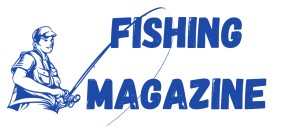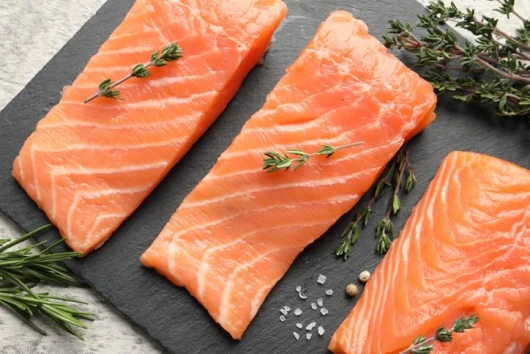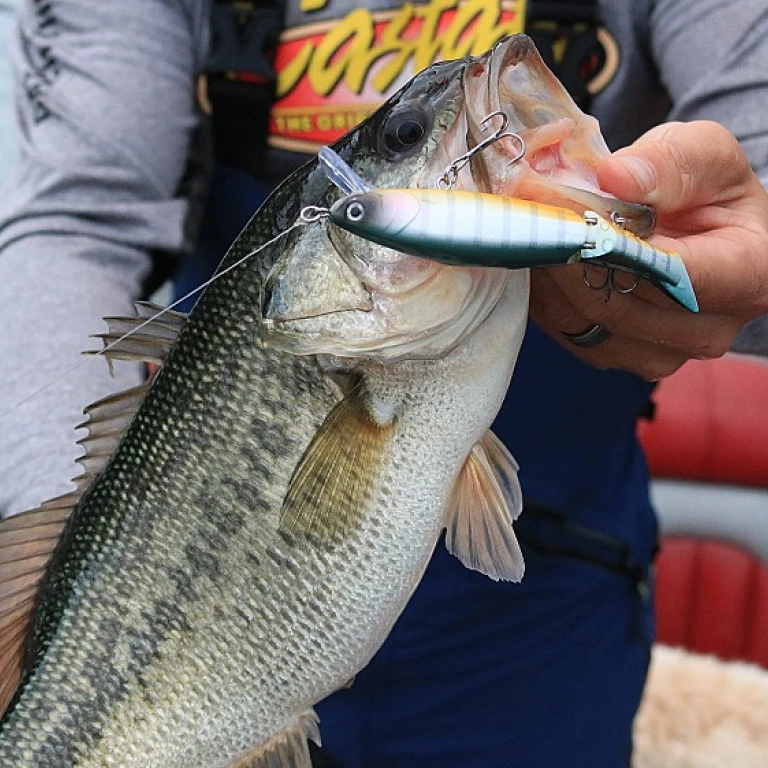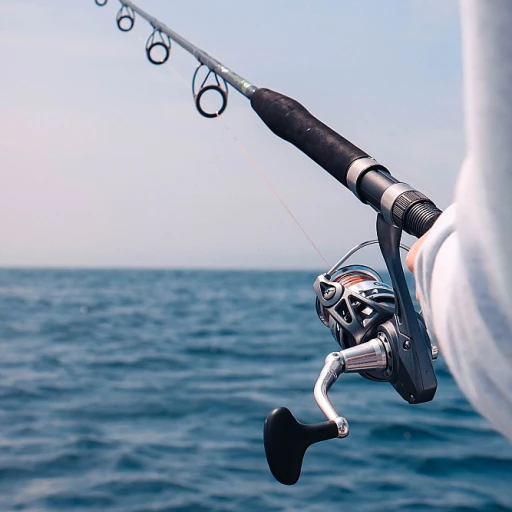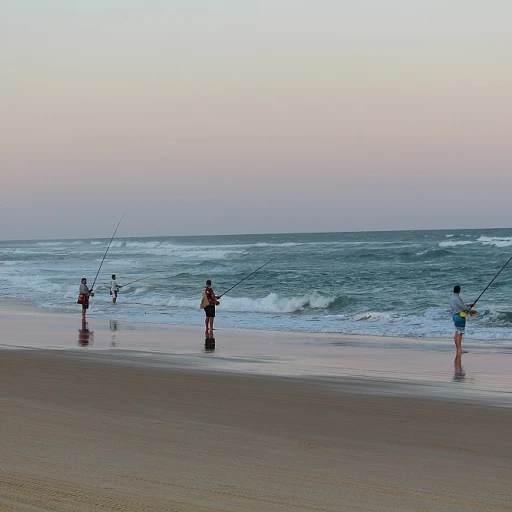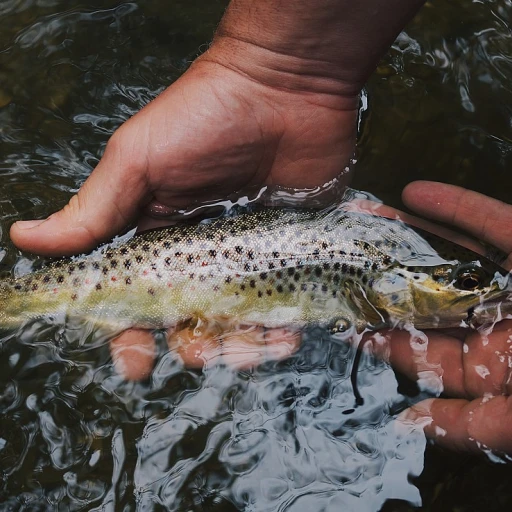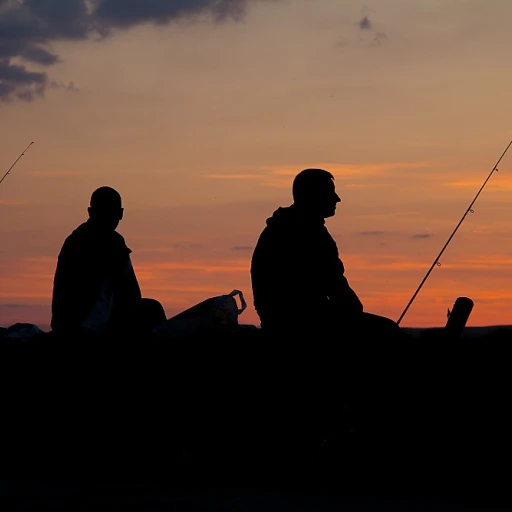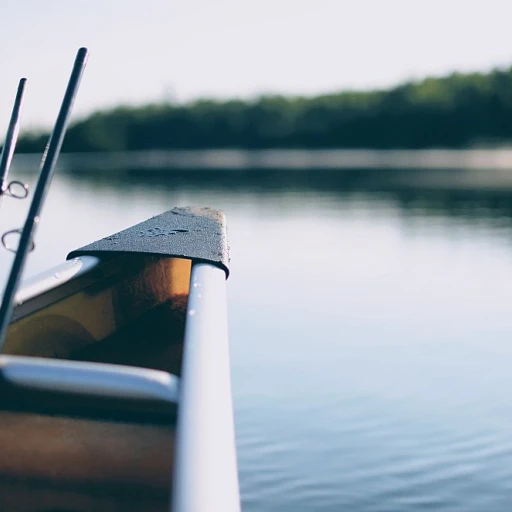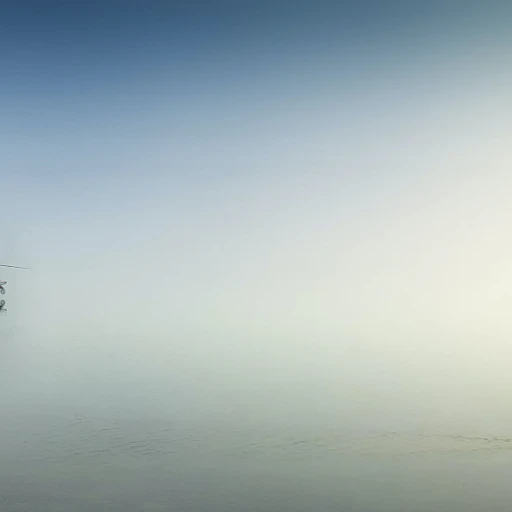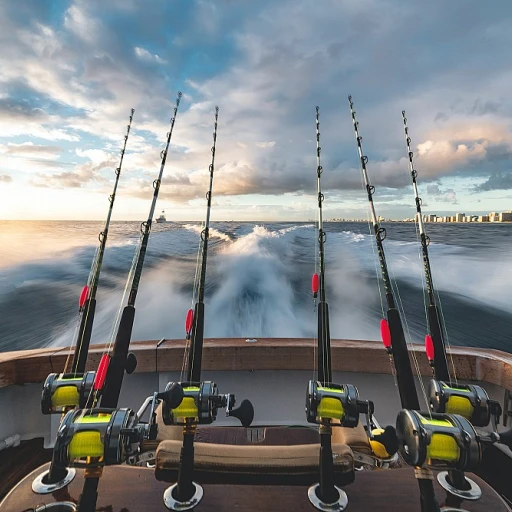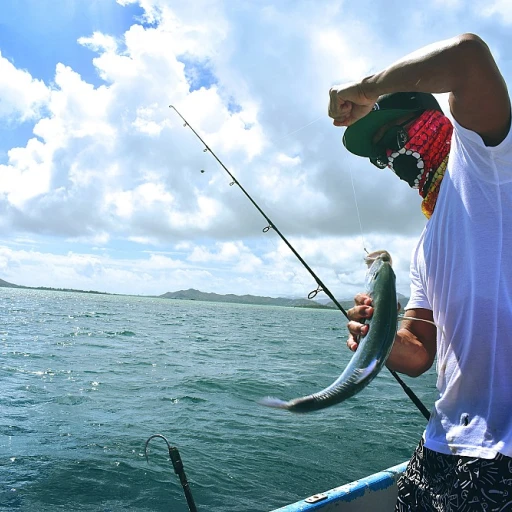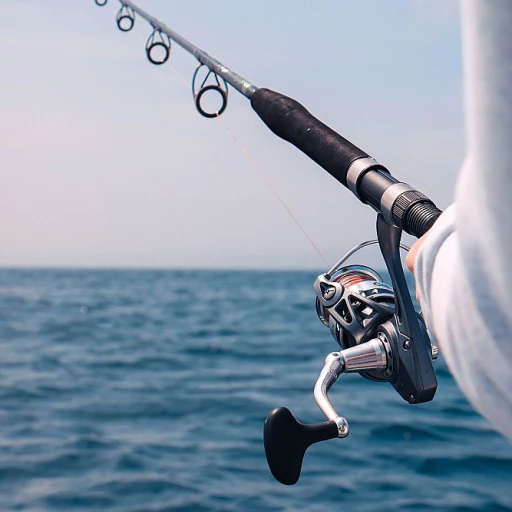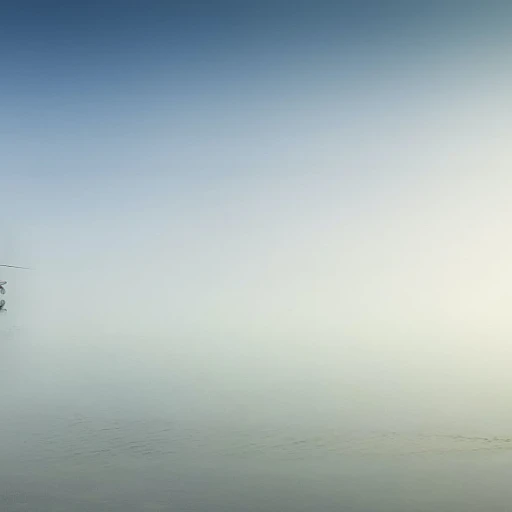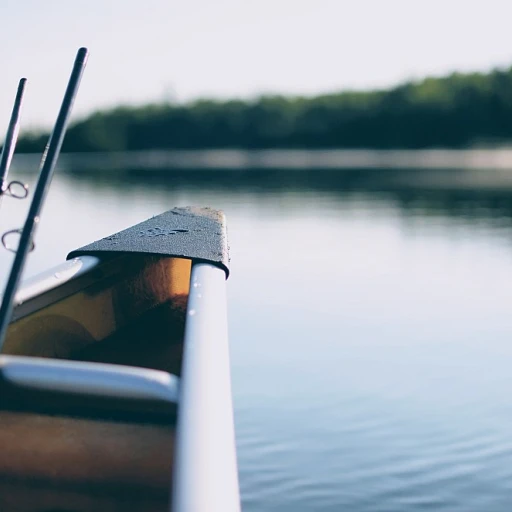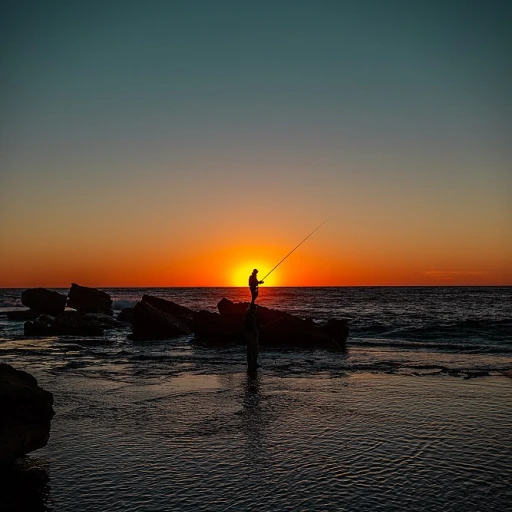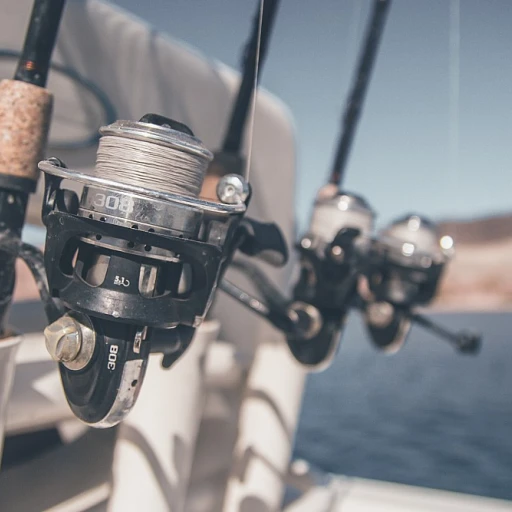
Understanding White Salmon Fish
The Unique Allure of White Salmon
White salmon, often referred to as the ivory king or white king, is a fascinating species that captivates anglers with its unique characteristics. Unlike the more common red-fleshed salmon, the white salmon boasts a distinctive ivory flesh color. This variation in flesh color is due to a genetic trait that prevents the fish from metabolizing carotenoids, the pigments responsible for the orange hue in most salmon species.
Primarily found in the cold waters of Alaska and the Pacific Northwest, these fish are a prized catch for both their rarity and their delectable taste. The Columbia River and other salmon rivers are popular destinations for those seeking to catch white salmon. The wild alaskan white kings are particularly sought after, often caught using troll methods, which ensures a sustainable approach to fishing.
Understanding the natural home of these fish is crucial for any angler hoping to catch one. The habitat of the white salmon is similar to that of other king salmon species, thriving in the nutrient-rich waters of the Pacific Ocean before migrating to freshwater rivers to spawn. For more insights into the natural habitats of fish species, you can explore this resource.
While the allure of catching a white salmon is undeniable, it is essential to be aware of the challenges and techniques involved in successful fishing, as well as the importance of sustainability and conservation efforts to preserve these magnificent fish for future generations.
Challenges in Catching White Salmon Fish
Encountering the Elusive White King
The white salmon, renowned for its striking appearance and unusual flesh color, poses a unique set of challenges for fishermen. As a variant of the king salmon, also known as chinook salmon, the white king's elusive nature captivates anglers. These fish, often referred to as the ivory king for their light-colored flesh, require both skill and patience to be caught.
White kings are notably prevalent in the Pacific Northwest, particularly the mighty Columbia River and the pristine waters of Alaska. These vast areas offer abundant habitats for the salmon, yet the vastness of the regions often conceals their presence to those unprepared. One of the primary challenges is their migratory patterns, which can be unpredictable. Seasoned anglers rely on their understanding of environmental cues and historical data to increase their chances of success.
The disparity in distribution and color amongst king species demands an additional level of expertise, as fishermen attempt to target the distinctively pale-fleshed salmon among the more common red-fleshed varieties. Many fishermen argue that the white meat of wild Alaskan king salmon offers a unique flavor profile coveted in seafood cuisine.
Given the ethereal lure of the white salmon, conservation and sustainability considerations play a crucial role in maintaining a viable population. Anglers must navigate regulations that protect against overfishing while pursuing their passion. Adhering to these guidelines ensures that the opportunities to catch these majestic creatures in the wild remain available for future generations.
Engaging in white salmon fishing isn't merely about the challenge; it's about participating in a larger ecosystem, understanding the delicate balance, and cherishing each catch, troll caught or otherwise, as a testament to skill and respect for nature.
Essential Gear for White Salmon Fishing
Equipping Yourself with the Right Tools
When targeting white salmon, or what some may refer to as the "ivory king," having the proper gear can significantly enhance your fishing experience. This unique species, with its distinctive white meat, requires specific equipment to increase your chances of a successful catch. First and foremost, selecting the right rod and reel is crucial. Anglers targeting wild salmon, especially in the king salmon category, will benefit from using a rod designed for salmon fishing. These rods are typically longer and more robust to handle the powerful strokes of a white king once hooked. Pairing this with a high-quality reel ensures smooth casting and retrieval in the challenging conditions of the Columbia River or even the vast Alaskan waters. Next, your line choice can make all the difference. Opt for a robust and reliable line, as white kings are known for their strength. Fluorocarbon lines are a popular choice due to their low visibility in water and excellent abrasion resistance, necessary features when fishing in rough or rocky environments. Lures and baits are another essential aspect when angling for white salmon. Trolling with baitfish such as herring, or using brightly colored lures that imitate these prey, can entice the elusive white kings. The vibrant patterns of red and orange are particularly effective, as they stand out in the often murky river waters. Lastly, if you're venturing into the cold waters of Alaska for a shot at catching these Pacific salmon, investing in quality gear is vital. A durable tackle box, waterproof clothing, and insulated boots will ensure that you're prepared for whatever Mother Nature throws at you. If you're planning a trip, collaborating with local fishing resources can be invaluable in determining what additional gear might be necessary. For a comprehensive fishing plan, a well-detailed map guide of prime white salmon fishing spots can be your best friend. Dive into enhancing your fishing experience with a comprehensive map guide to ensure you're fully equipped for your adventure. By assembling the right gear, you're not only increasing your chances of catching the sought-after white salmon but also ensuring a memorable and rewarding experience on the water.Techniques for Successful White Salmon Fishing
Methods to Enhance Your Fishing Success
Catching the elusive white salmon, also known as ivory king or king salmon, requires both patience and knowledge of the right techniques. Often referred to as the ivory king for its distinctive white flesh, this variant poses unique challenges and demands skillful tactics. Here are some methods to help bolster your success.- Troll Fishing: Among the most effective approaches to hook a white king is troll fishing. Utilizing this method in strong current waters such as the Columbia River or the Salmon River can be particularly rewarding. The slow, steady pace paired with the right lure allows the fish to be drawn in, often resulting in an exciting catch.
- Understanding Their Habitat: Equipping yourself with knowledge about where these fish dwell is crucial. Many white kings are caught in the rivers of Alaska, where they are known to thrive. Familiarize yourself with local conditions and adjust your timing. Being present during peak migration or feeding times enhances your chance of a successful haul.
- Gear Up with Quality Lures: Quality gear is non-negotiable. Using lures that mimic their natural prey can be particularly effective. Given the variety of salmon species in the rivers, tailor your lure choice to draw in the ivory king. High-quality, colorful lures that imitate small fish or crustaceans are often favored.
- Experiment with Bait Options: Vary your bait to ensure you're meeting the fish's preferences on that particular day. Some anglers have found success with cut baits, while others swear by roe and worms. Testing different options can make all the difference.
- Be Patient and Persistent: Salmon fishing is a waiting game, especially when targeting the white variety. The fish can be elusive, and not every trip will yield success. Keeping patient and spending extended time on the water will increase your chances of filling your cooler with this prized catch.
Sustainability and Conservation
Preserving the Future of Wild White Salmon and its Habitat
In the mesmerizing world of salmon fishing, sustainability and conservation have taken center stage. Preserving the habitats of the white salmon, including the majestic ivory and white king species, is crucial given their unique presence in rivers like the Columbia River and remote areas in Alaska. These wild salmon populations face challenges from environmental changes to overfishing, impacting their potential to thrive for future generations. Responsible fishing practices are essential to maintain the population levels of these coveted fish. Among the practices gaining traction is the adoption of catch-and-release methods, allowing anglers to enjoy the thrill of catching the ivory king salmon while ensuring their preservation. Additionally, efforts to restore natural habitats along Alaskan rivers and other important waterways are ongoing to maintain the delicate balance in these ecosystems. In support of these sustainability efforts, many anglers and fishing communities emphasize buying troll-caught Alaska seafood, particularly wild Alaskan salmon with recognized sustainability certifications. By prioritizing seafood obtained through responsible and sustainable practices, the pressure on fishing stocks can be alleviated. This also supports local economies that depend on these practices for their livelihood. Active dialogue and collaboration between fishing communities, conservationists, and policymakers play a pivotal role. Strengthening the management strategies set forth by fish hatchery systems ensures that wild king salmon, king salmon, and other Pacific salmon species continue to swim their paths in vigor and abundance. Such collaborations seek to address challenges like habitat degradation and overfishing, reinforcing the commitment towards preserving these natural treasures. As fishing enthusiasts, understanding the ecological importance of these species helps foster a culture of responsible fishing that will ensure future generations can also savor the exhilaration of catching the magnificent white salmon. Endorsing conservation-friendly practices empowers us to contribute to the long-term health of our seas and rivers, echoing the call for a balanced interaction with our natural world.Community and Resources
Building Connections and Finding Support in the Fishing Community
The community surrounding white salmon fishing is more than just a network of passionate anglers; it's a treasure trove of knowledge and mutual support. Engaging with fellow fishermen not only enhances your skills but also deepens your understanding of the species. Whether you’re swapping stories about those elusive king salmon or sharing tips on the best tackle for that perfect catch, the camaraderie is invaluable. Online Forums and Local Clubs:- Joining online forums dedicated to salmon fishing, particularly those focused on Alaska's diverse species, provides a platform for exchanging experiences and advice. Here, you can learn about the differences in fish flesh color, from the striking red to the delicate ivory of the rare white kings.
- Local fishing clubs provide a more hands-on approach. Often organizing trips along the salmon river, these clubs encourage sustainable practices and promote the conservation of wild alaskan stocks, ensuring future generations can enjoy these fishing pursuits.
- Many fishing communities organize workshops that cover everything from identifying a king salmon to recognizing when these fish are best caught. These sessions are important for preserving the wild salmon population and highlight techniques for troll caught methods specific to species like the white king and ivory king.
- Collaborations with fish hatcheries can offer insights into the life cycle of species such as chinook salmon. These facilities play a crucial role in maintaining the balance between wild and hatchery-bred stocks, helping to fill local rivers and oceans with healthy fish ready to be caught by anglers.
